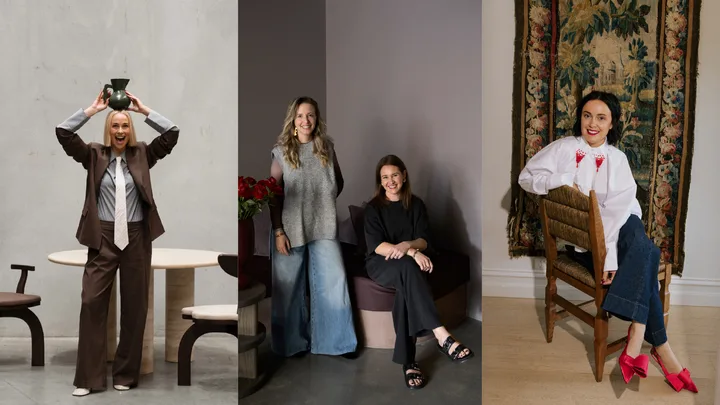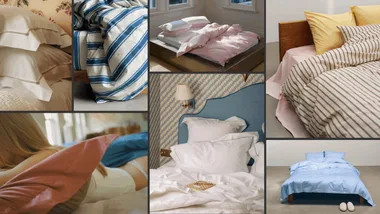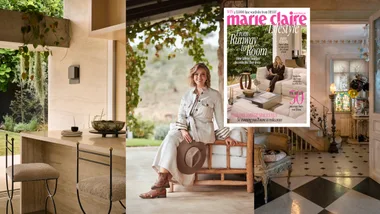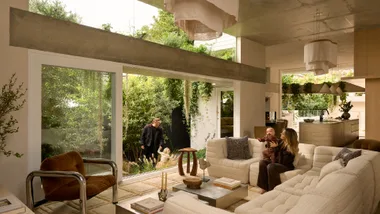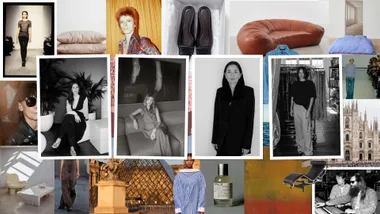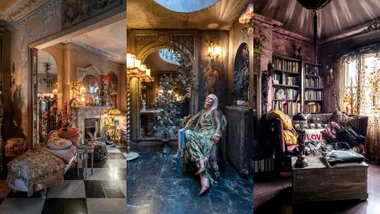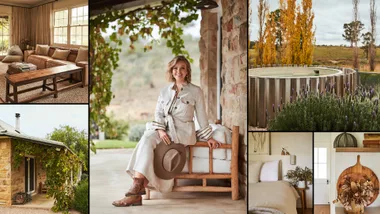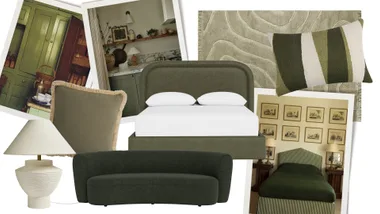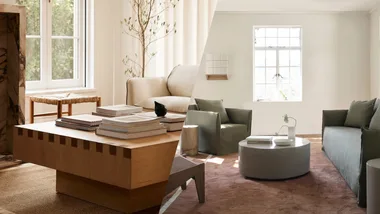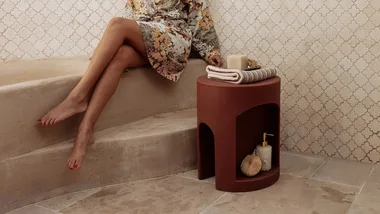Trends may come and go, but these interiors insiders are setting the pace. With fearless style, sharp instincts, and an eye for the unexpected, they’re the names turning blank spaces into statement moments. Trust us – you’ll want them on speed dial.
Dominique Brammah And Shannon Shlom Of We Are Duet
If We Are Duet were a room, it would never look the same twice. One day it might be wrapped in Svenskt Tenn’s clover-leaf wallpaper; the next, stripped back to a tonal zen den, softened by a cotton waffle throw on the sofa. And that’s the whole point. Sydney-based designers Dominique Brammah and Shannon Shlom, co-founders of boutique interiors studio We Are Duet, don’t do one-size-fits-all. They shape-shift. Their work is layered, eclectic and always deeply personal – designed to reflect the people who live in it.
“Creative harmony, for us, feels like a beautifully chaotic dance,” they explain. “All the cogs in a wheel turning – each with its own beat, but moving together.” Their partnership is more than collaboration – it’s a true duet. And it’s built on trust. “Trust in each other and, crucially, trust from the client,” says Brammah.
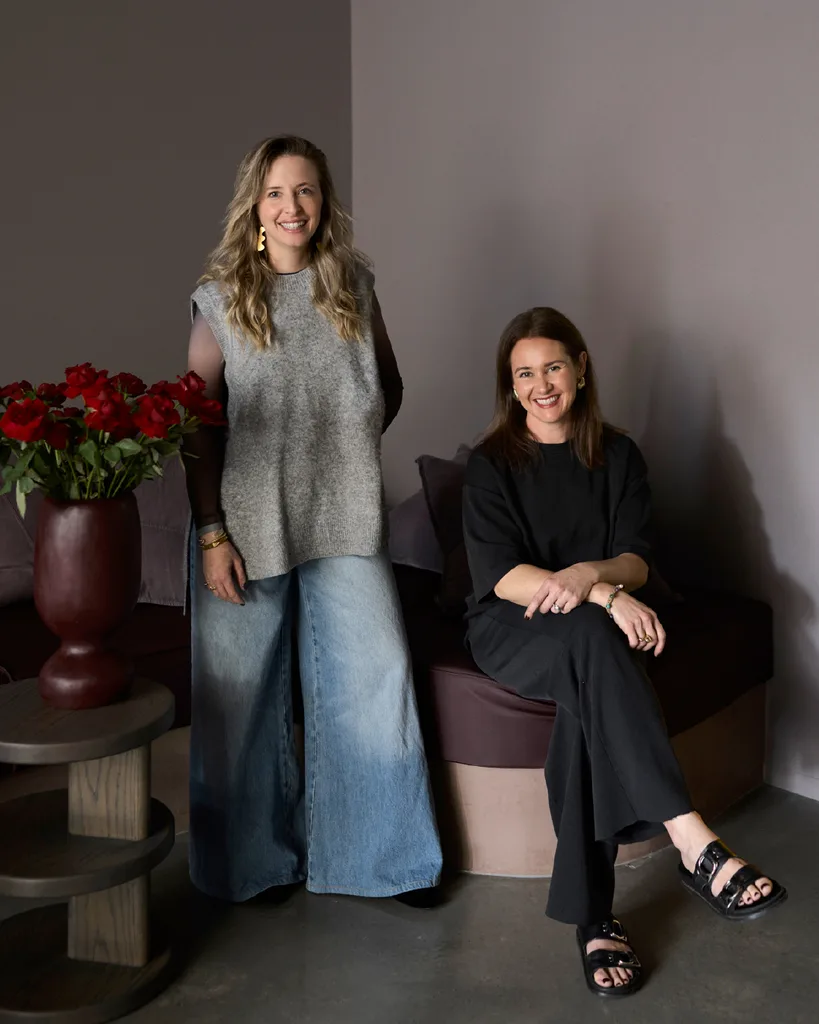
Their signature approach? Creative ping-pong. Ideas are volleyed back and forth, refined with every pass. “It’s energising,” says Shlom. “There’s a hum between us – the hum of inspiration. Whether we’re perfectly aligned or pushing from different angles, we keep going. The duet plays on.”
The studio was born in the bleary hours of early motherhood – a 1am text thread between tile samples and a settling newborn. “That moment taught us that design doesn’t clock off; it lives in the in-between,” Brammah says. Since then, they’ve worked remotely but in sync.
There are countless voice notes, shared sketchbooks and flexible hours. “We’ve learnt to design our lives the way we design spaces: with thought, structure and plenty of room for the spontaneous,” Shlom says.

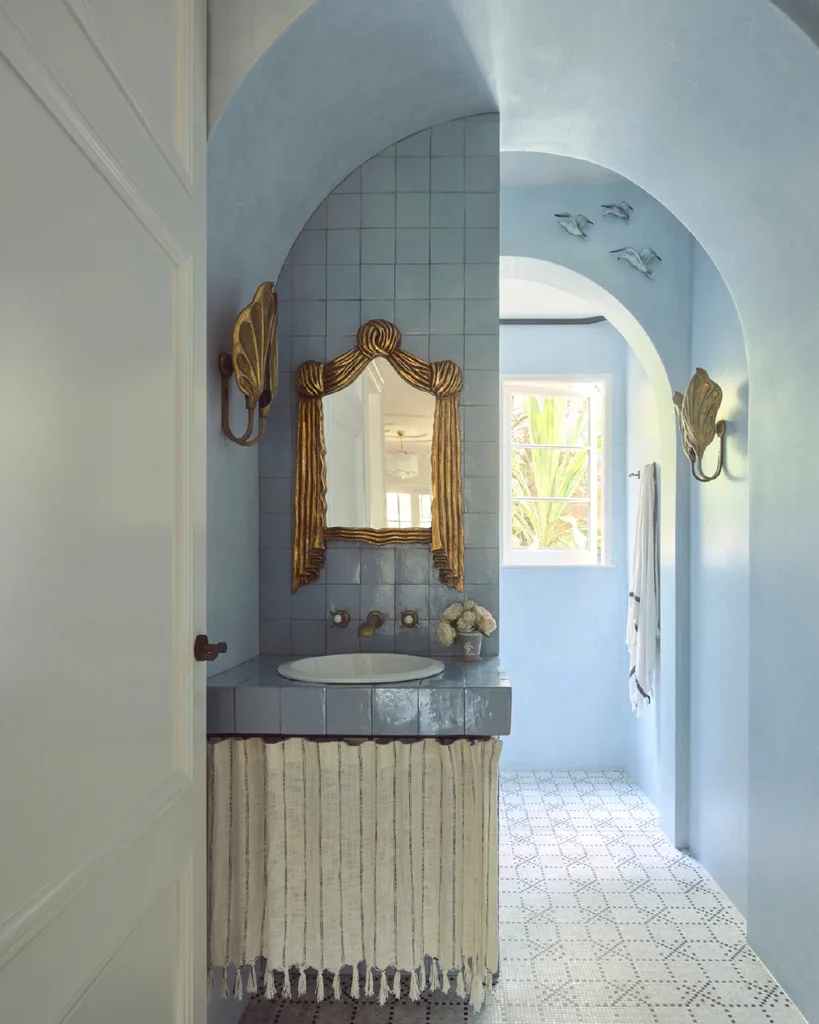
That lifestyle doesn’t just support the work, it drives it. “Our homes reflect how we want to live: engaged, textured, emotionally connected,” Brammah says. “There’s so much beauty in the world – why not invite it in?” We Are Duet spaces are joyful and always evolving. “Homes shouldn’t be staged or static,” Shlom says. “Shift a chair. Add a lamp. Keep it alive.” Still, behind the play is purpose. “We’re both capable of everything,” says Brammah, “but we respect each other’s strengths. That keeps the work balanced and layered.”
Their voice-note exchanges have become sacred. “They catch ideas in the moment,” says Shlom. “You hear the excitement, the spark.” One note stands out. “We were exhausted – end of a project, low on budget and momentum,” Brammah says. “Then I had a light-bulb idea to customise a basic fixture. I sent Shan a manic voice note. It became a bespoke piece – budget-friendly but full of personality.” For Shlom, voice notes often become design tools. “I speak the idea into being. I’ll start one place and end somewhere totally different. It’s cathartic.”
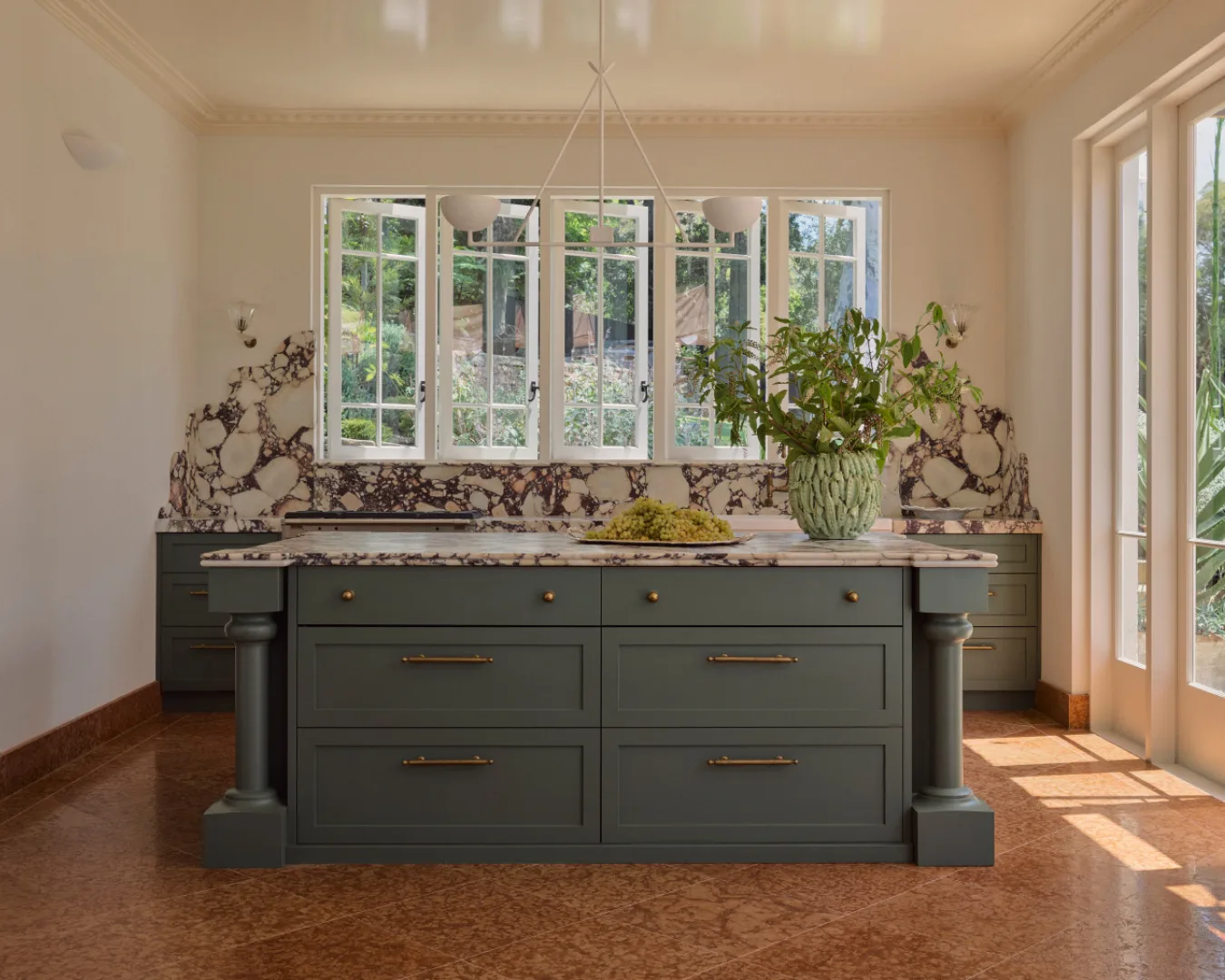
The throughline? Empathy. “It’s not just a soft skill; it’s foundational,” says Brammah. “We design for how people feel, not just what they see.” Their client process also goes deep. “We ask how do they want to live? What phase of life are they in? What’s their family rhythm?” Shlom explains. That emotional layer gives their spaces depth.
“We sit between nostalgia and aspiration,” says Brammah. “That tension is where the magic lives.” They love symmetry (matching bedside tables, please). They love meaning (a cushion made from a client’s late mother’s sarong is still one of their most treasured projects). But they’re not afraid to bend the rules. “Sometimes imbalance is the beauty,” says Shlom.
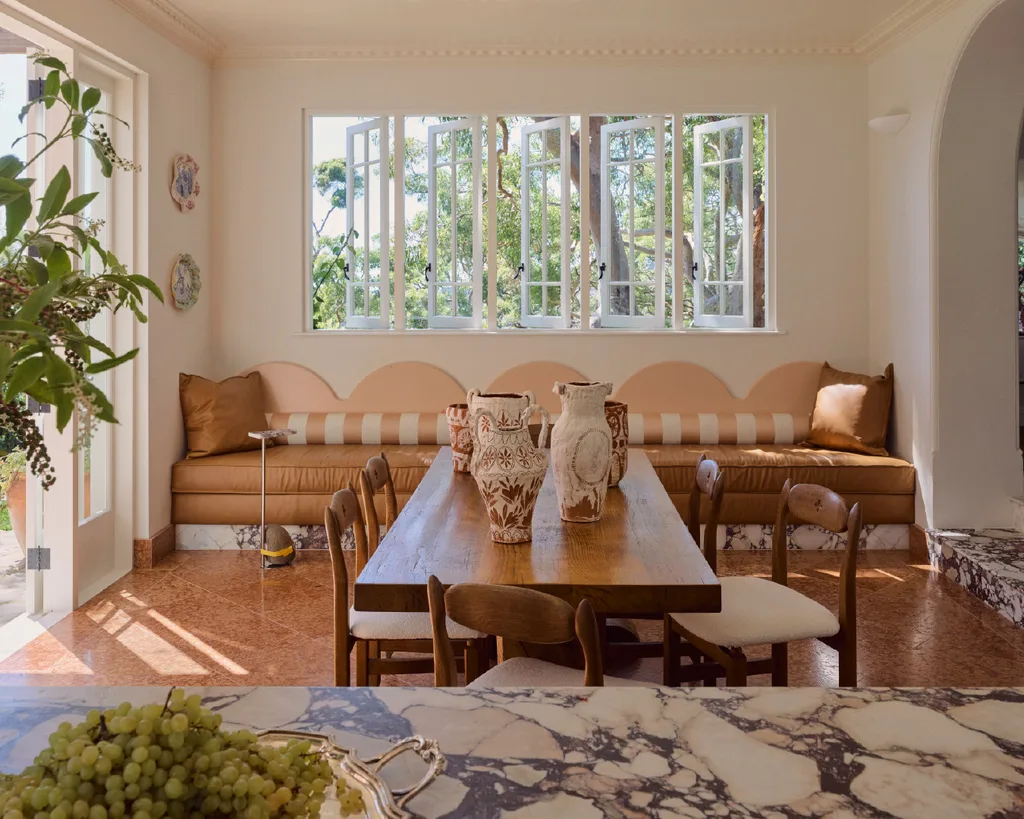
In their world, there are no quick fixes; just happiness-inducing, long-hand interiors. “We’re not here to rush,” says Brammah. “We’re here to zoom in on the detail.” Their dream projects reflect their range. Brammah would love to design a boutique hotel.
“Immersive, atmospheric, a little theatrical – it’s where you can colour outside the lines.” Shlom’s dream is quieter, but just as impactful: “A women’s shelter. A place of calm, dignity and comfort.” So, if We Are Duet were a space? “It would be warm, curious and full of soul,” they say. “Vintage meets new. Colour meets calm. A space that grows with you – just like we do.”

Rachel Donath
Rachel Donath’s Melbourne home is calm, sunlit and filled with the kind of sculptural forms that have become her signature. The designer, known for her instinctive approach to interiors and quietly luxurious furniture, has built a global following in just a few short years, but her process remains remarkably simple.
“When I approach a new piece, I ask myself, ‘Will I still enjoy looking at this in 10 years?’ If the answer is no, I don’t make it,” she says.
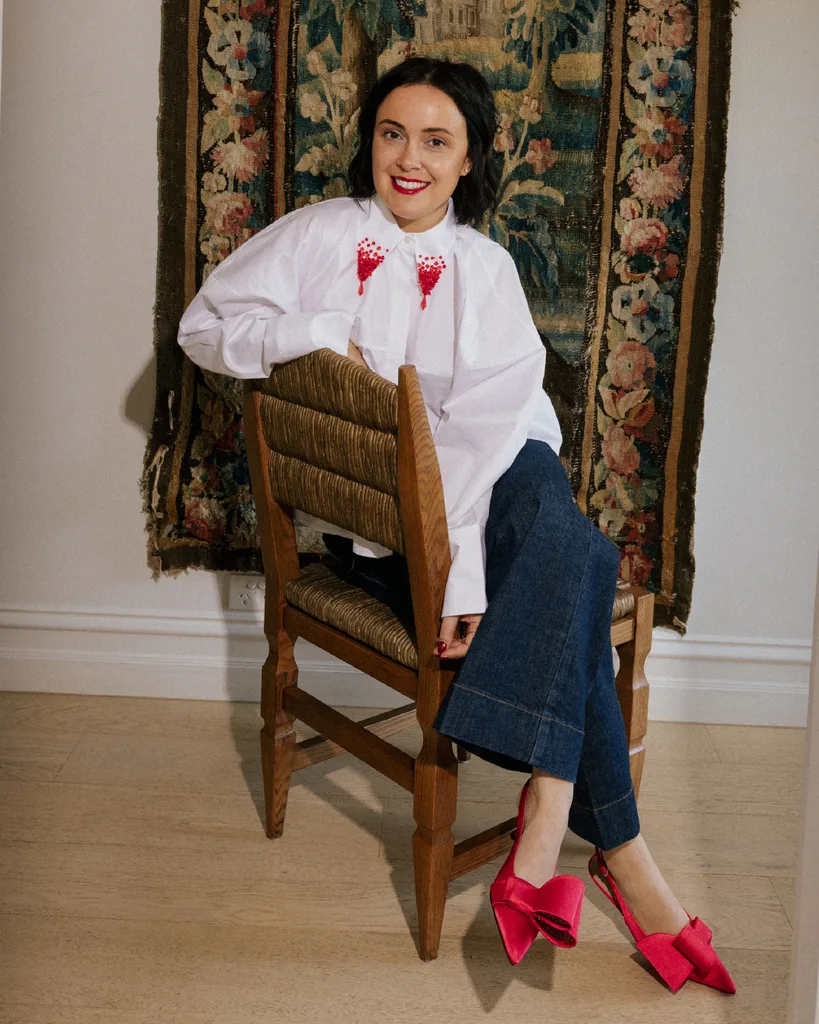
That question is what drives Donath’s design philosophy. “Inherent in good design is timelessness,” she says. “Anything too trend-driven is guaranteed to bore you, or worse, irritate you once the novelty wears off.” Her work, while varied in its influences, always carries an underlying restraint – an appreciation for sculptural form, elegant materiality and objects that make a subtle statement.
Donath’s creative path has been anything but conventional. She began her career sourcing and selling vintage pieces, often from her garage, before moving into designing her own collection. Naturally, antiques continue to inform her design instinct. “I don’t work to a fixed aesthetic or era,” she says. “Like vintage sourcing, my designs are about finding something unique and surprising. I want my customers to feel that same sense of delight.”
Because of this approach, her work tends to feel curated rather than produced, with each piece standing on its own yet fitting seamlessly within her world.
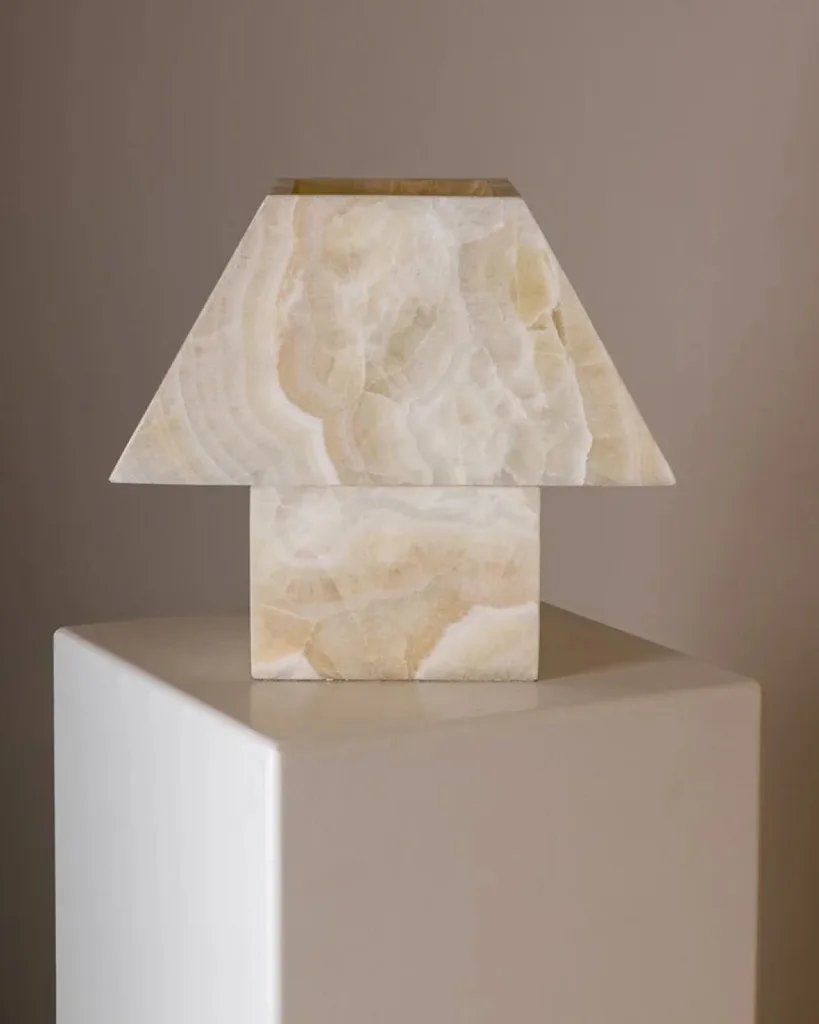
Though the shapes may appear effortless, Donath’s designs are anything but. She collaborates closely with artisans, travelling to workshops in Vietnam and beyond to oversee the production process. “I visited some of my makers earlier this year and was blown away by their attention to detail. The level of care they bring to each piece is extraordinary,” she says.
“When you’re building a business for the long term, there is no other option but to be obsessed with quality.”
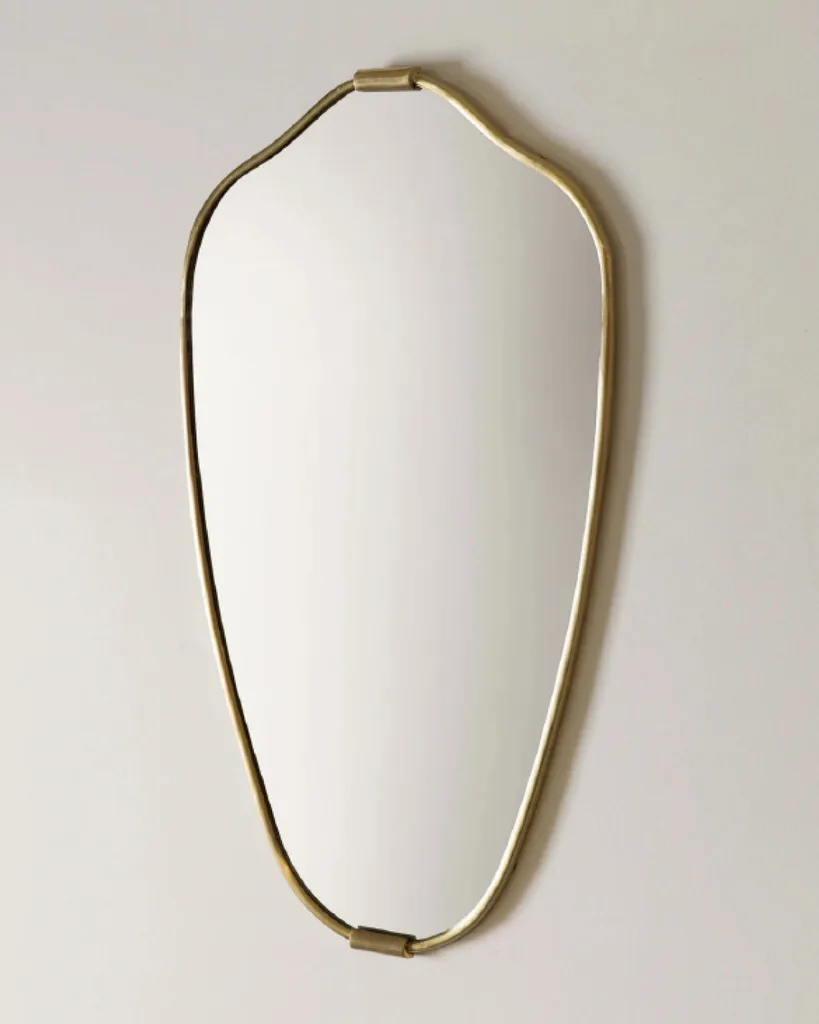
Donath’s business may now have international reach, but its roots remain personal. She built her company organically, without investors or loans, starting with what she describes as “maybe $50 and a stall at a local market”. Like many entrepreneurs with limited resources, she became resourceful. “I’d find metal scraps on Facebook Marketplace and turn them into sculptures, repurpose old tables with new stone tops. When you have no choice, your creativity peaks.”
When asked for advice on creating timeless interiors, Donath is unequivocal. “Be selective about what you bring into your home. I have an aversion to clutter and consumerism for the sake of more, especially with young children. Be ruthless about what you keep and what you let go.” She also warns against seeking external approval.
“Choose what speaks to you. As soon as you start looking for validation, you lose your personal taste.” And finally, patience is key. “Sometimes people rush to furnish a space, but I’d rather live without a coffee table for a year than settle for something that doesn’t spark joy. Beautiful homes are collected over time.”
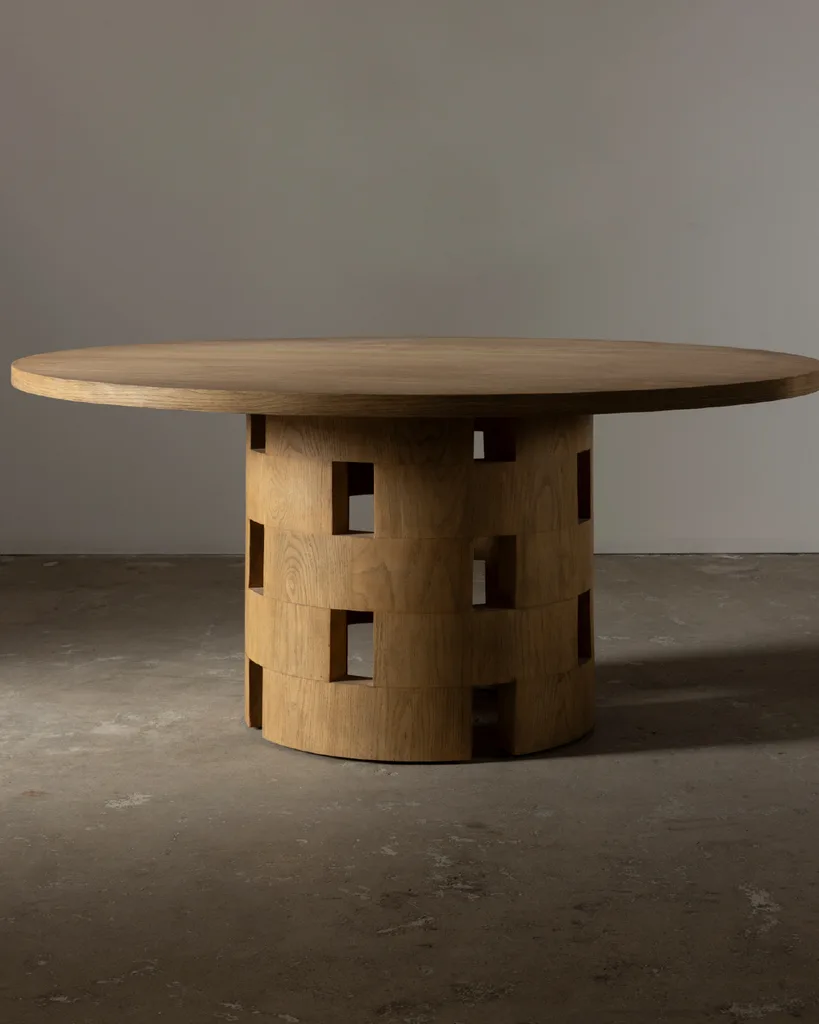
Donath’s definition of luxury feels refreshingly accessible. “Luxury today is about considered spaces. It’s creating a home that reflects how you want your family to live and connect. In our house, we hid the TV behind custom joinery and made the fireplace the focal point because I wanted to encourage conversation. That, to me, is real luxury.”
If she could design anything with no restrictions, Donath wouldn’t create furniture at all. “I’d make sculptures. Huge, mixed-media pieces with presence and texture,” she says. And it’s easy to imagine her doing just that – after all, her entire career has been a lesson in trusting her instinct.
Jade Yarbrough
With her blend of Parisian romance and Australian ease, Jade Yarbrough has redefined what it means to live with beautiful design. When Jade Yarbrough launched Merci Maison during the throes of COVID lockdowns, she wasn’t following a trend – she was following her intuition. “People were craving spaces that felt considered and personal,” she says.
“Merci Maison found its place in that moment.” As is so often the case, her instinct was right. In the years since, the brand has grown from a tight edit of sculptural furnishings and homewares to one of Australia’s most talked about design exports.
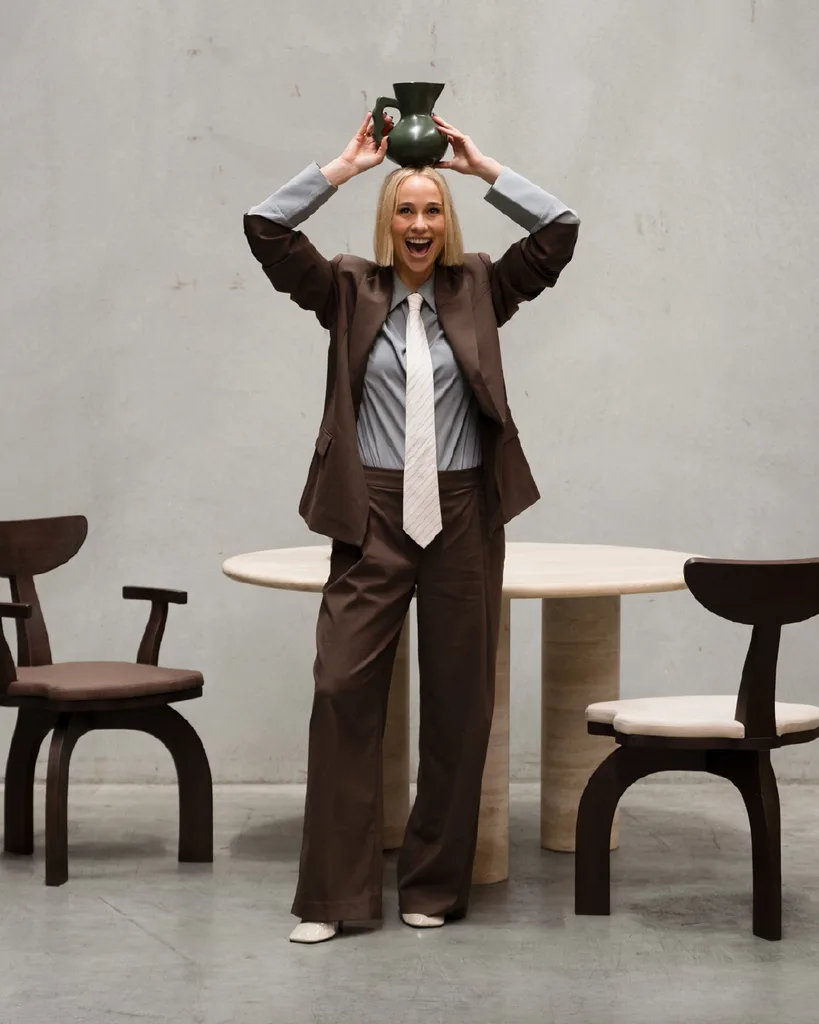
At the core of Merci Maison is a clear design DNA: feminine yet structured forms that quietly draw your attention. “I always wanted Merci Maison pieces to be recognisable,” Yarbrough explains. “That’s definitely us – there’s a silhouette, a confidence. The pieces don’t overpower, but they always stand out.” From her sinuous ‘Claude’ lounge to the architectural ‘Marcel’ dining table, each creation balances elegance with intention. The effect is almost editorial – gallery-like but always inviting. “It’s bold, emotional design that still feels like home.”
The foundation of Merci Maison was actually laid years before its official launch. Working as an interior designer, Yarbrough found herself custom-making pieces out of necessity. “I couldn’t find what I was looking for, so I started designing,” she recalls. Simultaneously, she was scouring Parisian flea markets for vintage gems. “There was this clear need and shared love for pieces that had soul,” she says. “That’s when the seed was really planted.”
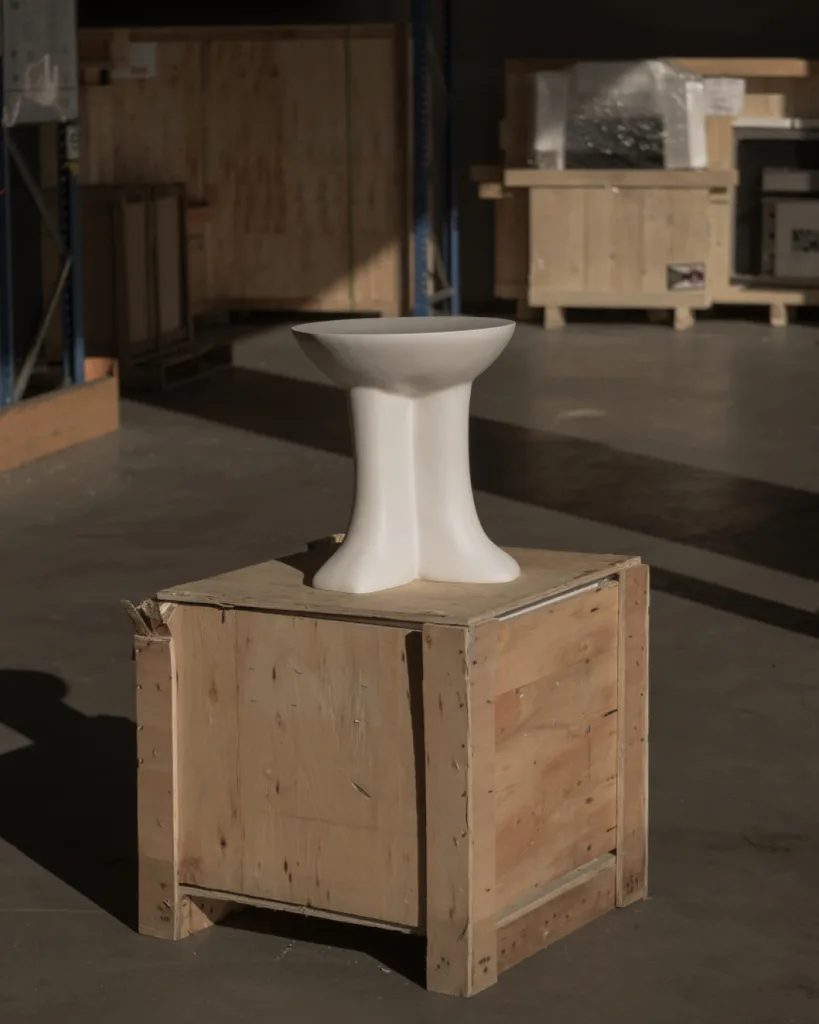
Launching during a global shutdown had its challenges – samples sent by post, Zoom calls with artisans, a slowed-down design process – but it taught Yarbrough to be “specific and meticulous”, she says. That studious approach, along with a refined eye for materiality and scale, is what gives Merci Maison its charm. Raised on Australia’s east coast, Yarbrough’s aesthetic is deeply influenced by her lifestyle. “There’s a natural desire here for indoor-outdoor living and casual elegance,” she says. “That really sits at the heart of my approach to design.” The result is furniture that feels meant to be lived with. Think refined forms, natural textures and tonal palettes that echo Australia’s relaxed beauty.
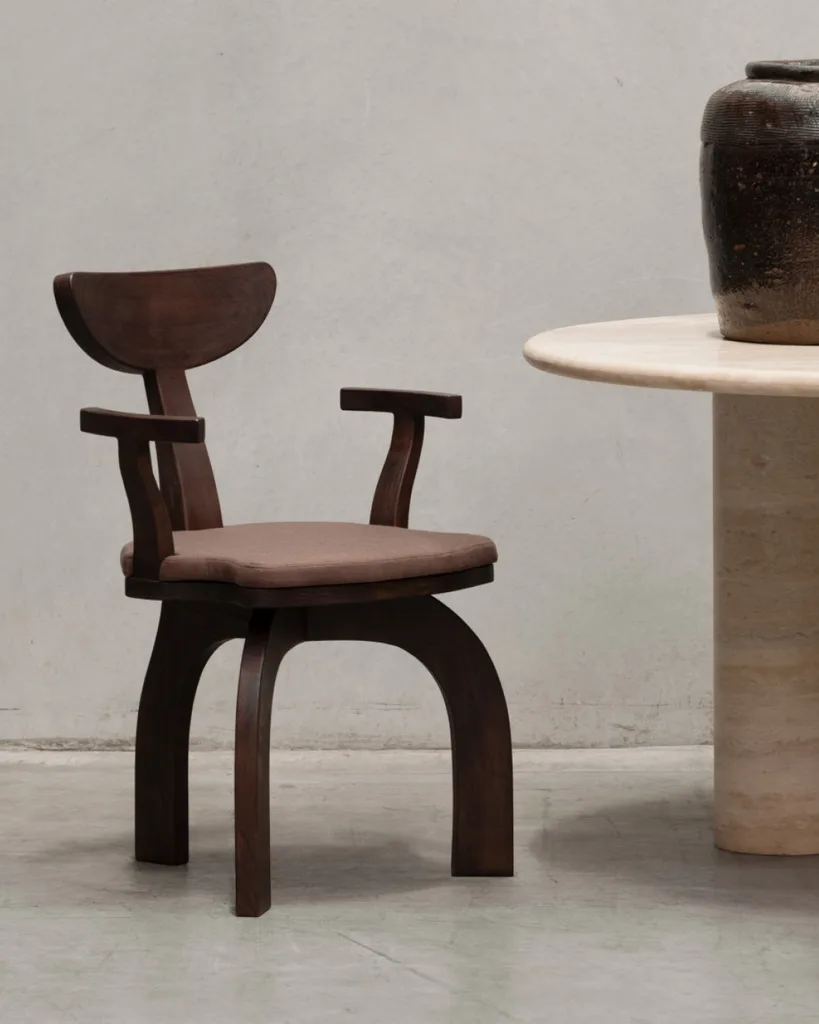
It’s this balance – between emotion and utility, form and function – that anchors the brand. “Beautiful pieces should still function effortlessly in everyday life,” she says. “Will it age well? Is it comfortable? Does it serve a purpose beyond looking good?” She applies the same approach to running her business. Yarbrough oversees everything from international production to creative direction, and says the biggest challenge has been learning how to manage growth.
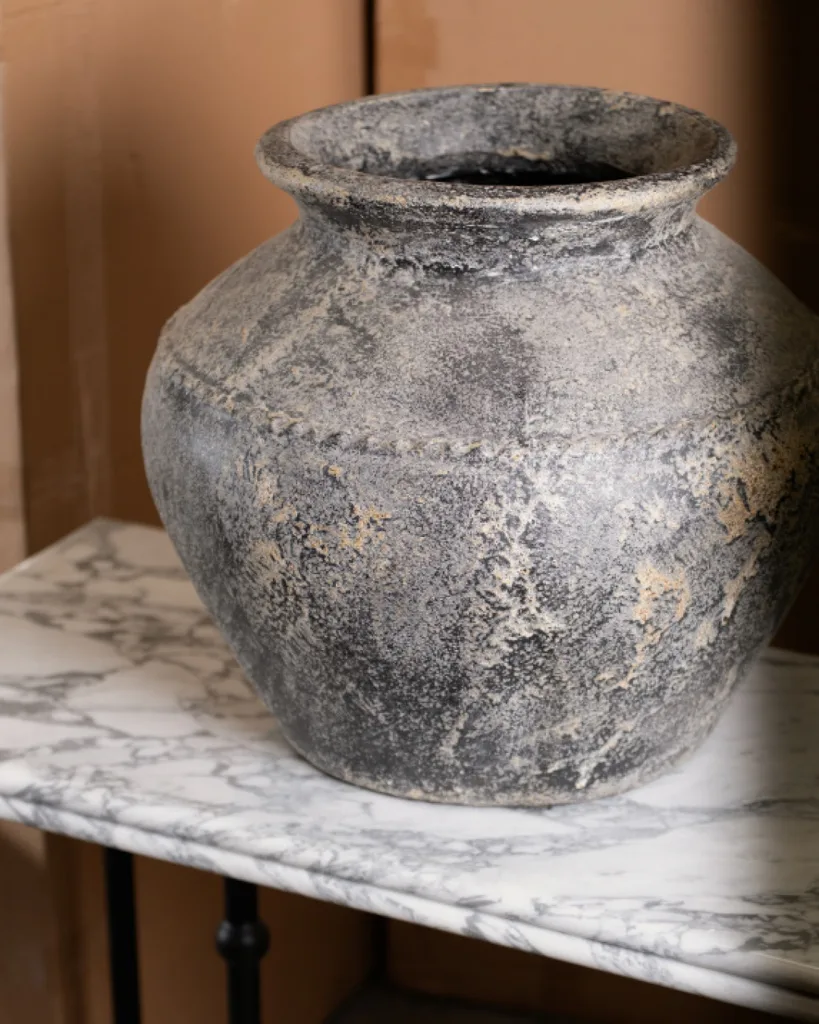
“It’s about building something lasting, not just fast.” Social media has certainly helped. Merci Maison’s presence online has allowed Yarbrough to build what she describes as “a family” – a network of creatives, stylists and muses who support and inspire one another. But she’s quick to note: “The real magic happens in the physical world. Nothing compares to seeing a piece in person.” The good news is that tactile magic may soon have a permanent address.
Yarbrough’s dream? “A dedicated Merci Maison home… Not just a showroom, more than a shop. A space to live with the pieces.” Until then, the brand continues to expand – lighting is on the horizon, as is a broader range of homewares and, of course, “Furniture that lives with you. That you want to reach out and touch. That never shouts, but is never overlooked.”

